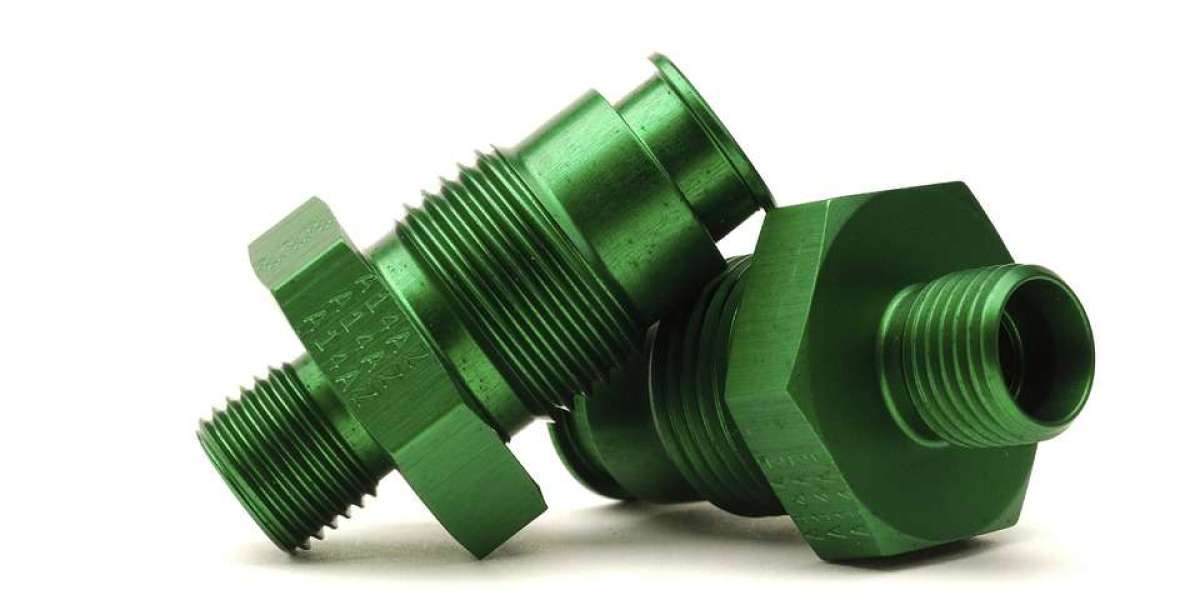Automatic turning parts are critical components in the manufacturing industry, playing a key role in various sectors like automotive, aerospace, medical, and electronics. These parts are produced using an automated turning process, a type of machining operation that involves rotating a workpiece against cutting tools to create precise cylindrical Automatic Turning Parts. The process is highly efficient, accurate, and scalable, making it ideal for producing complex and high-precision parts. In this article, we will explore the significance of automatic turning parts, the process of manufacturing them, their applications, and the benefits they offer across various industries.
What Are Automatic Turning Parts?
Automatic turning parts are components produced by an automated lathe machine through the turning process. In this process, a rotating workpiece is fed into cutting tools that shape the material by removing excess parts. The cutting tools can be adjusted to perform various tasks such as facing, drilling, knurling, and threading, depending on the desired result.
The process is called "automatic" because the machine is programmed to carry out these operations without human intervention, ensuring consistency and efficiency in mass production. These parts are made from a wide range of materials, including metals like steel, aluminum, brass, and plastics, depending on their intended use.
Key Characteristics of Automatic Turning Parts
Precision and Accuracy: Automatic turning machines are capable of producing parts with high precision, often with tolerances as tight as a few microns. This is essential for industries like aerospace and medical, where every component must meet strict quality standards.
Complex Geometries: Automatic turning can be used to create complex geometries, including threads, grooves, and fine details that are difficult to achieve with manual methods. Multi-axis turning machines can even create intricate shapes with precision.
Mass Production: The automated nature of the turning process makes it highly suitable for mass production. Once programmed, the machine can operate for extended periods without human oversight, allowing for consistent production of high volumes of parts.
Versatility: Automatic turning machines can handle a wide variety of materials and processes, making them versatile in terms of the types of parts they can produce.
The Process of Manufacturing Automatic Turning Parts
The manufacturing of automatic turning parts involves several stages, each crucial for producing high-quality components. Here’s a breakdown of the process:
1. Material Selection
The first step is choosing the appropriate material for the part. Common materials used in automatic turning include metals such as stainless steel, aluminum, copper, and brass, as well as plastics and composites. The choice of material depends on the part's required strength, durability, corrosion resistance, and other functional characteristics.
2. Machine Setup
After selecting the material, the next step is setting up the automatic turning machine. This involves loading the raw material (in the form of a bar or rod) into the machine, adjusting the tool holders, and programming the machine's control system to carry out the desired operations. Many turning machines are CNC (Computer Numerical Control) machines, which allow for precise and automated control of the turning process.
3. Turning Process
Once the setup is complete, the machine begins the turning operation. The workpiece is rotated at high speed, while cutting tools remove material to achieve the desired shape. The process may involve multiple cutting tools for different tasks, such as rough cutting, fine finishing, threading, and drilling.
- Rough Cutting: The first phase involves removing large amounts of material to create the basic shape of the part.
- Fine Finishing: After the rough cut, a finer tool is used to achieve the final dimensions and smooth finish.
- Secondary Operations: Additional processes like threading, drilling, and knurling can be performed on the part during the turning process, based on the specifications.
4. Quality Control
Throughout the turning process, the part is closely monitored for quality control. CNC machines can be programmed to check tolerances and make adjustments if needed to ensure the part meets the required specifications. After the part is finished, it undergoes further inspection using tools like calipers, micrometers, and coordinate measuring machines (CMMs) to ensure accuracy and consistency.
5. Finishing and Deburring
Once the part is turned to its final shape, it may require finishing processes to remove any burrs, rough edges, or imperfections. Common finishing techniques include polishing, sanding, or coating, depending on the part's intended use.
6. Packaging and Delivery
After the part has passed quality inspection and is fully finished, it is packaged for delivery. In many cases, multiple parts are bundled together for shipment to manufacturers or clients.
Applications of Automatic Turning Parts
Automatic turning parts are used across a variety of industries due to their high precision and ability to meet strict tolerances. Some common applications include:
1. Automotive Industry
In the automotive sector, automatic turning parts are used to manufacture components such as engine blocks, pistons, shafts, bearings, and transmission parts. These components require high precision to ensure optimal performance and safety. Turning is often used to create cylindrical parts like wheel axles, drive shafts, and more.
2. Aerospace
Aerospace manufacturers rely on automatic turning to produce parts like turbine blades, valve bodies, and structural components. The high precision and durability required for aerospace applications make automatic turning an ideal manufacturing process. Components must often meet strict weight, strength, and performance requirements.
3. Medical Devices
In the medical field, automatic turning is used to create parts for devices like syringes, implants, prosthetics, and surgical instruments. These parts must be made from biocompatible materials and must adhere to stringent quality and safety standards. The precision of automatic turning ensures that these devices perform effectively and safely.
4. Electronics and Electrical Components
Automatic turning is also used in the production of components for electronics, such as connectors, screws, pins, and electrical contacts. These parts need to be highly accurate to ensure the proper functioning of electronic devices.
5. Industrial Machinery
Many industrial machines rely on automatic turning parts for their functionality. Examples include gears, pulleys, cams, and shafts. These components are often subjected to high levels of stress and must be made with precision to ensure long-lasting durability.
Benefits of Automatic Turning Parts
1. High Precision and Accuracy
One of the biggest advantages of automatic turning is its ability to produce parts with extremely tight tolerances. This ensures that every part meets the required specifications, which is essential for industries like aerospace, medical, and automotive, where precision is paramount.
2. Increased Efficiency and Speed
Automated machines can operate continuously for extended periods, reducing the need for human intervention. This leads to higher production rates, lower labor costs, and greater efficiency in manufacturing.
3. Consistency
Since the turning process is automated, there is little to no variability in part production. Each part produced is identical, which ensures that products maintain a consistent level of quality.
4. Cost-Effective for Mass Production
Automatic turning is ideal for producing high volumes of parts. Once the machine is set up and programmed, it can produce large quantities of parts quickly and efficiently, making it a cost-effective solution for mass production.
5. Versatility
Automatic turning machines can handle a variety of materials, sizes, and shapes, making them suitable for a wide range of applications across different industries. This versatility makes them valuable tools in modern manufacturing.
Conclusion
Automatic turning parts are essential components used in a variety of industries, offering precision, efficiency, and versatility in production. The process of automatic turning involves high-precision machinery that can handle a wide range of materials and create complex shapes with accuracy and consistency. From automotive and aerospace to medical devices and industrial machinery, the applications for these parts are vast and varied.
The benefits of automatic turning are clear: it allows for the high-volume production of components with tight tolerances, reduces labor costs, and ensures consistent quality. As industries continue to demand higher standards of precision and efficiency, the role of automatic turning in modern manufacturing will only continue to grow.
Whether you are an engineer, manufacturer, or designer, understanding the process and applications of automatic turning parts is crucial for making informed decisions in production and design.







